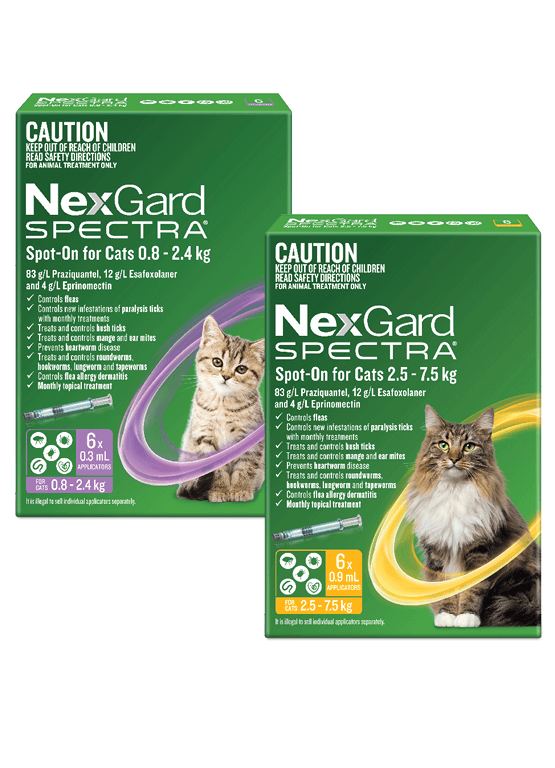Lungworm prevention in cats
Monthly treatment with NexGard SPECTRA® prevents lungworm infestations in cats, as well as providing protection against fleas, ticks, mites, heartworm and intestinal worms. It provides the most complete parasite protection, all in one easy, monthly application.






